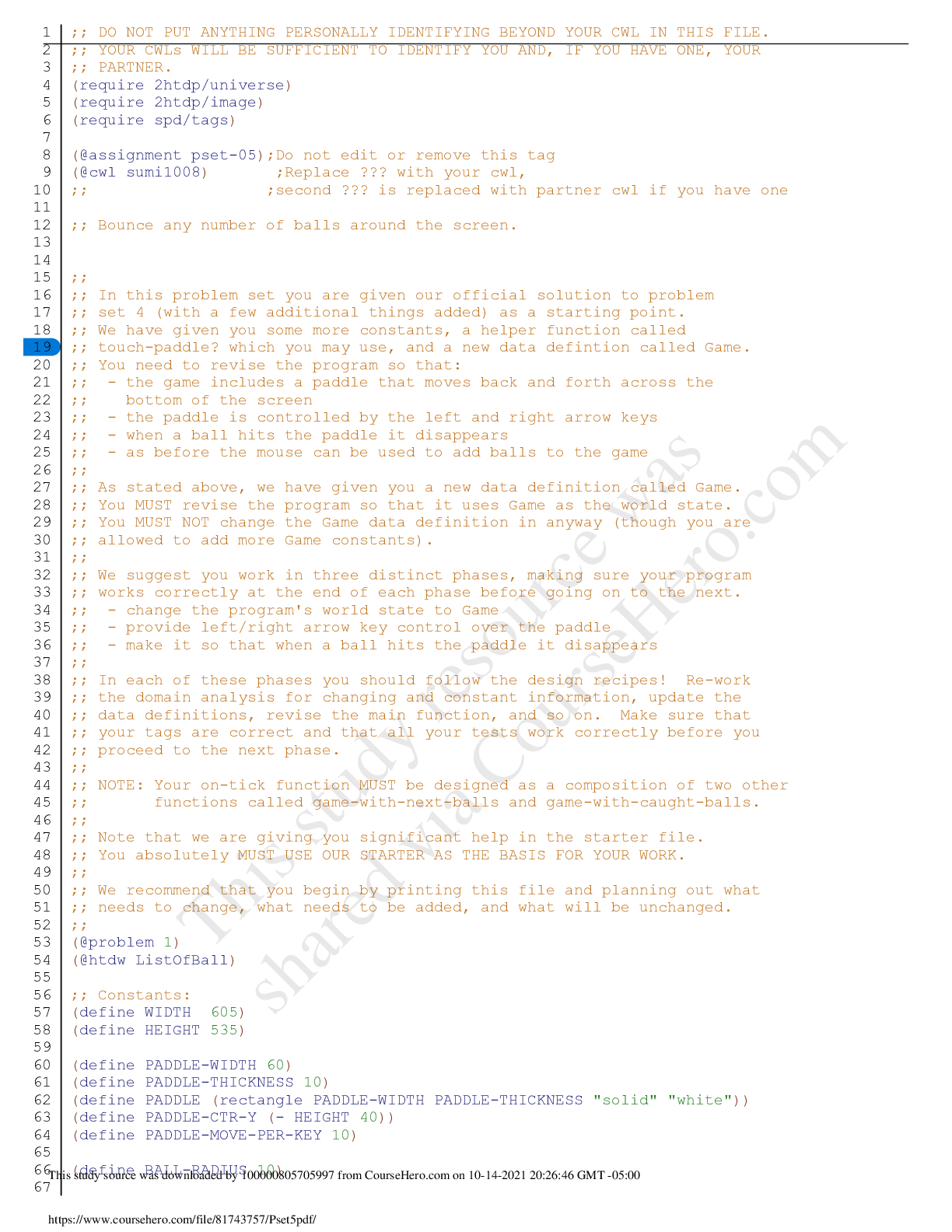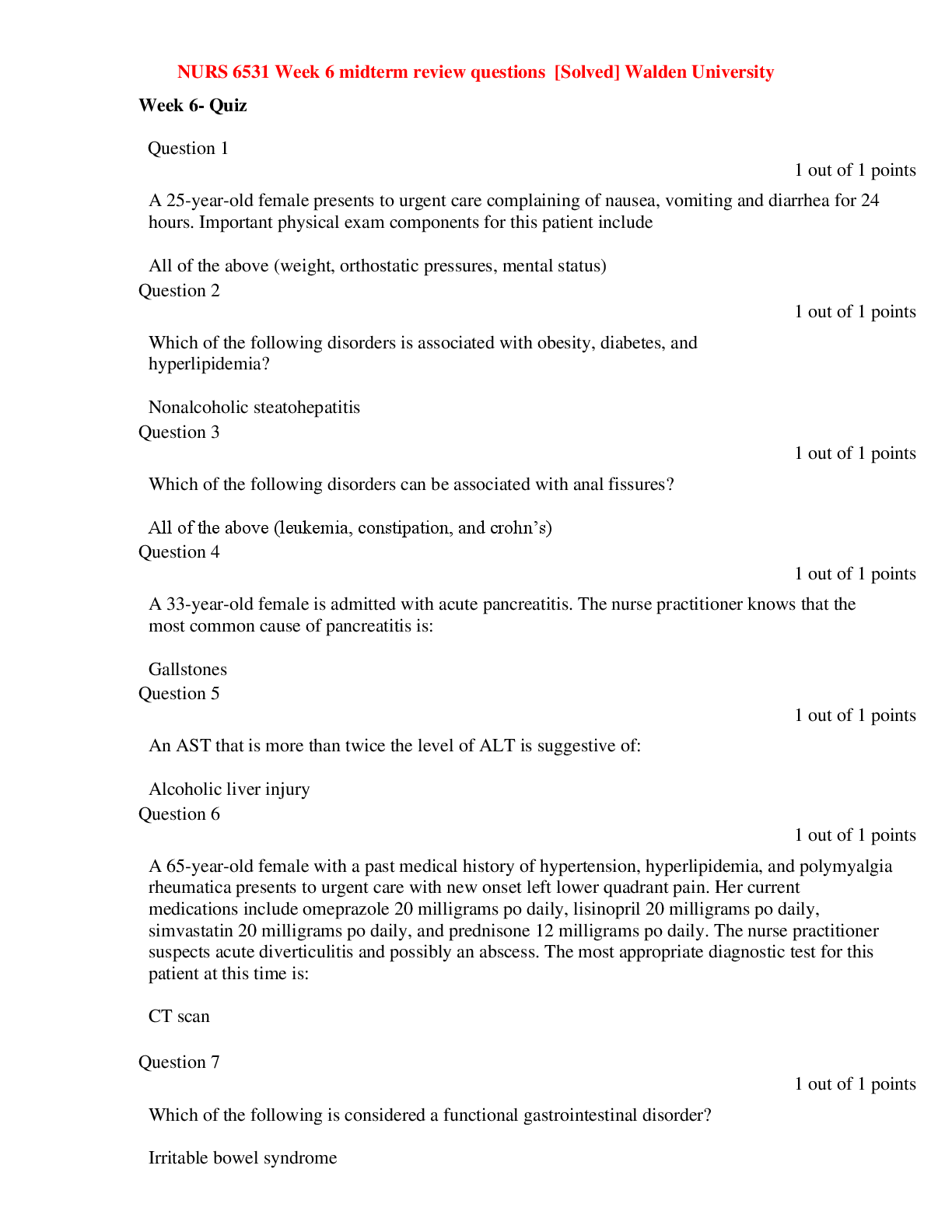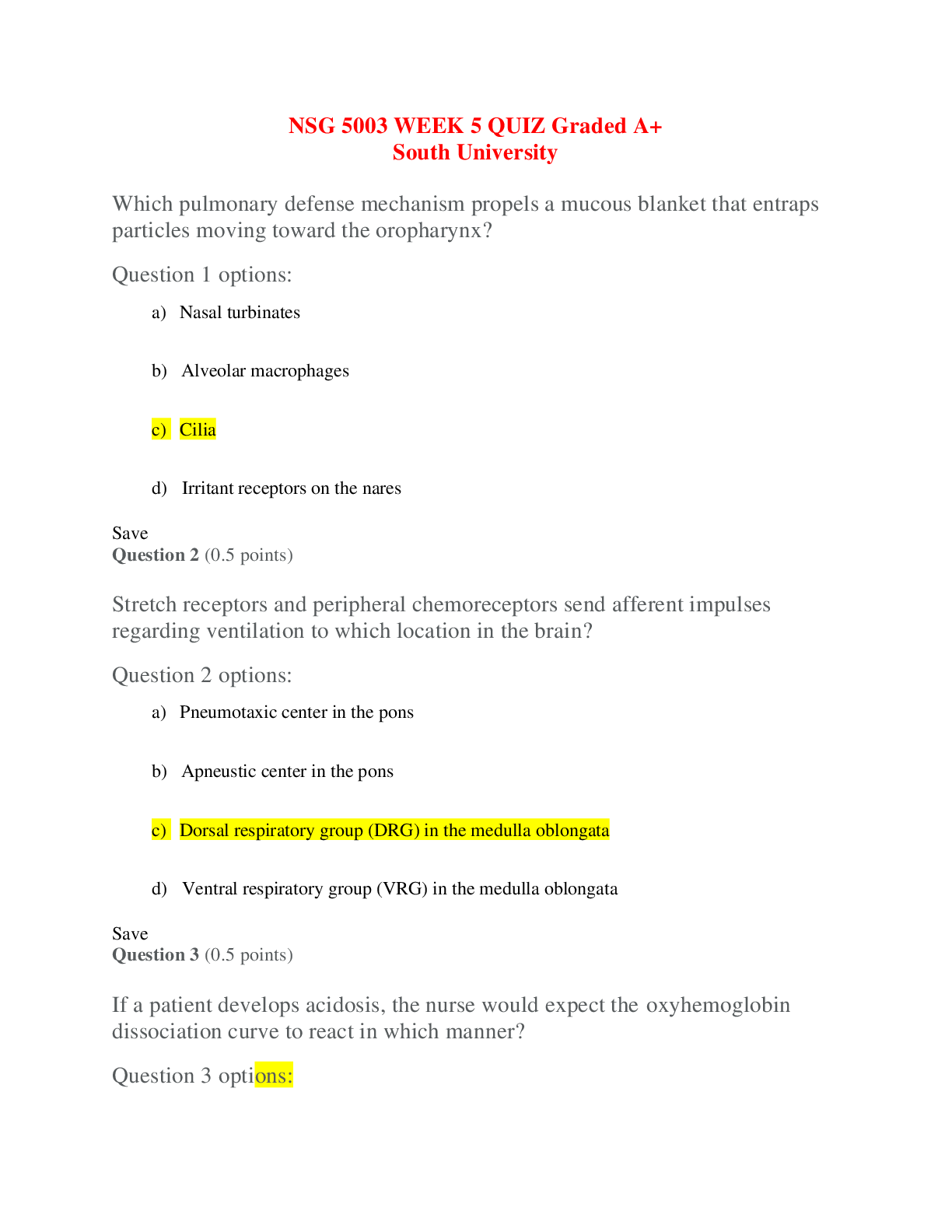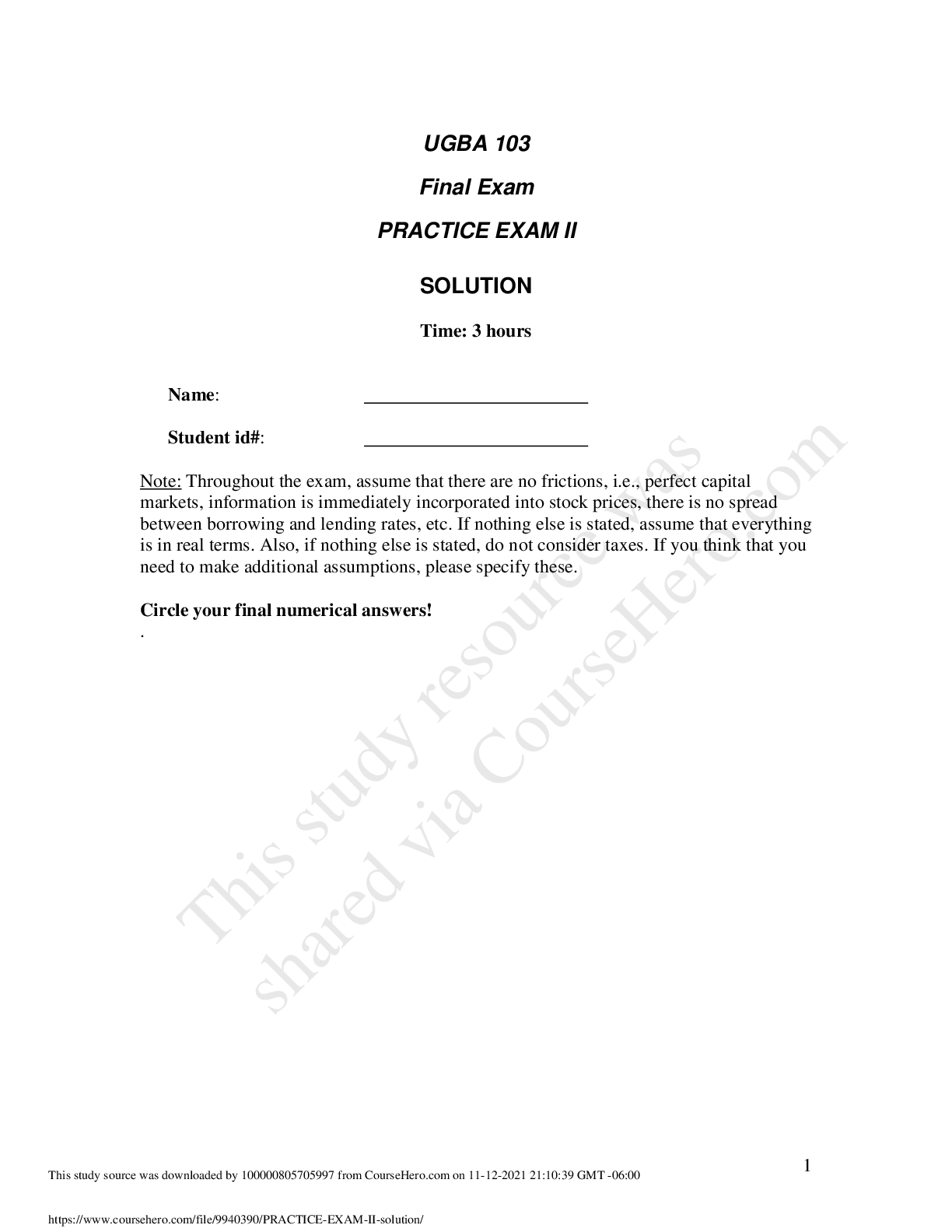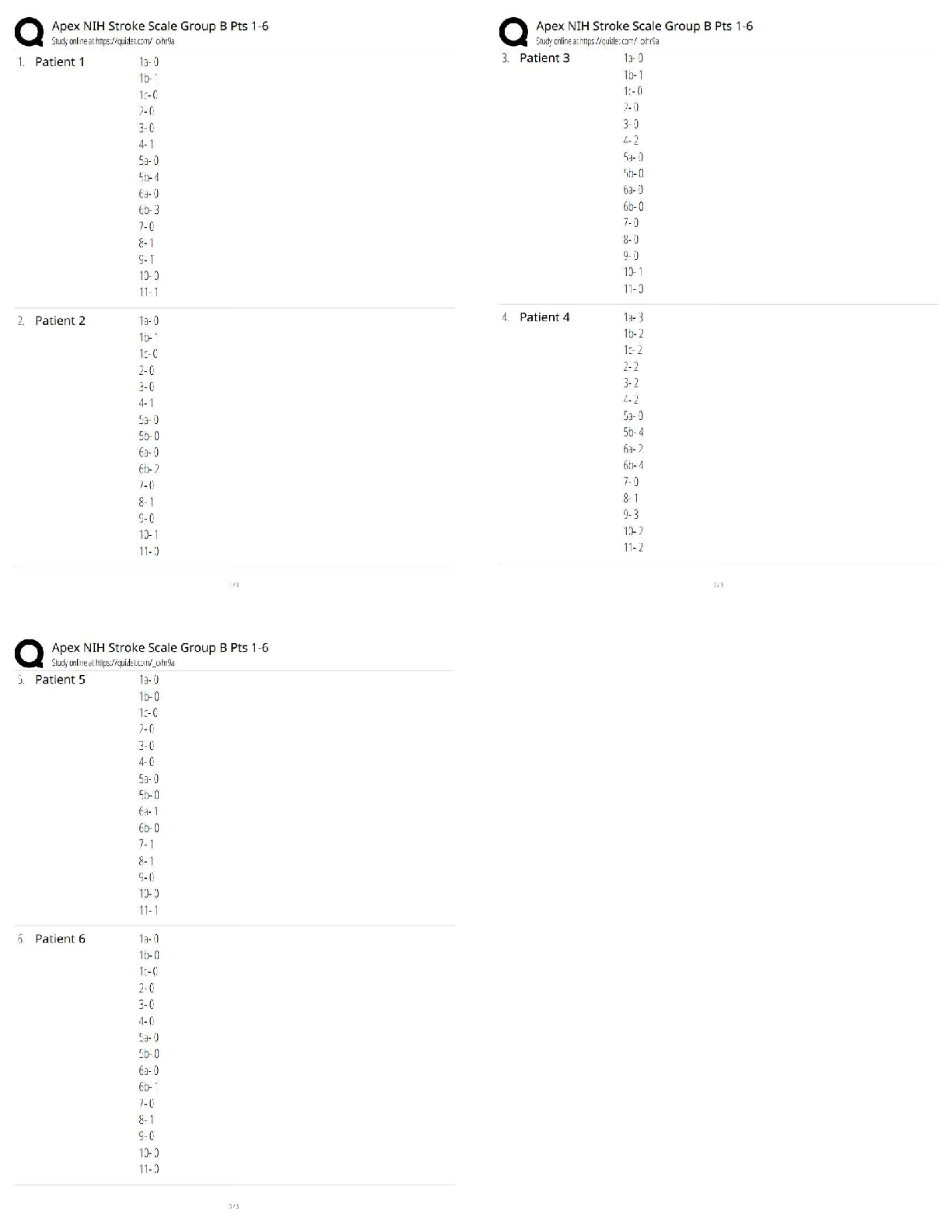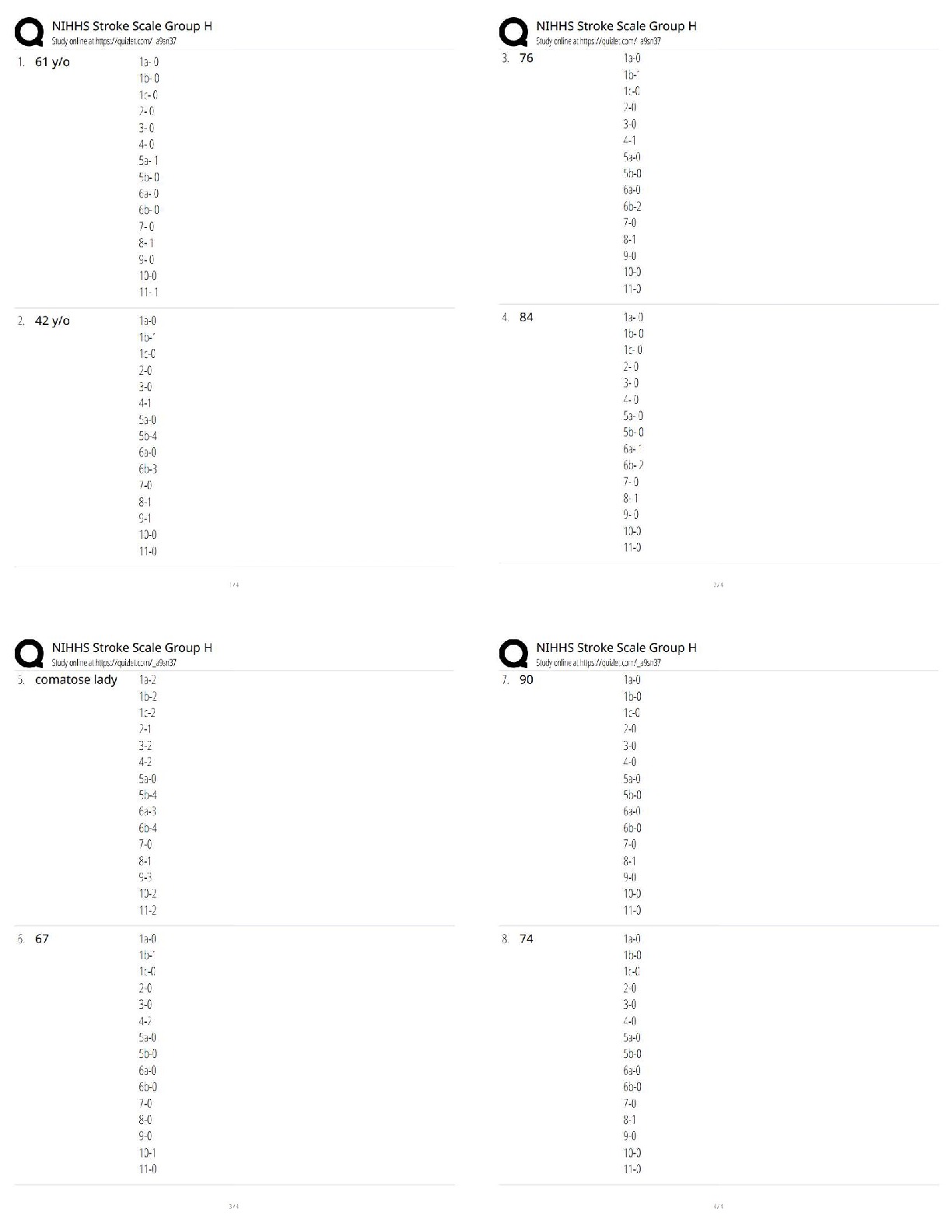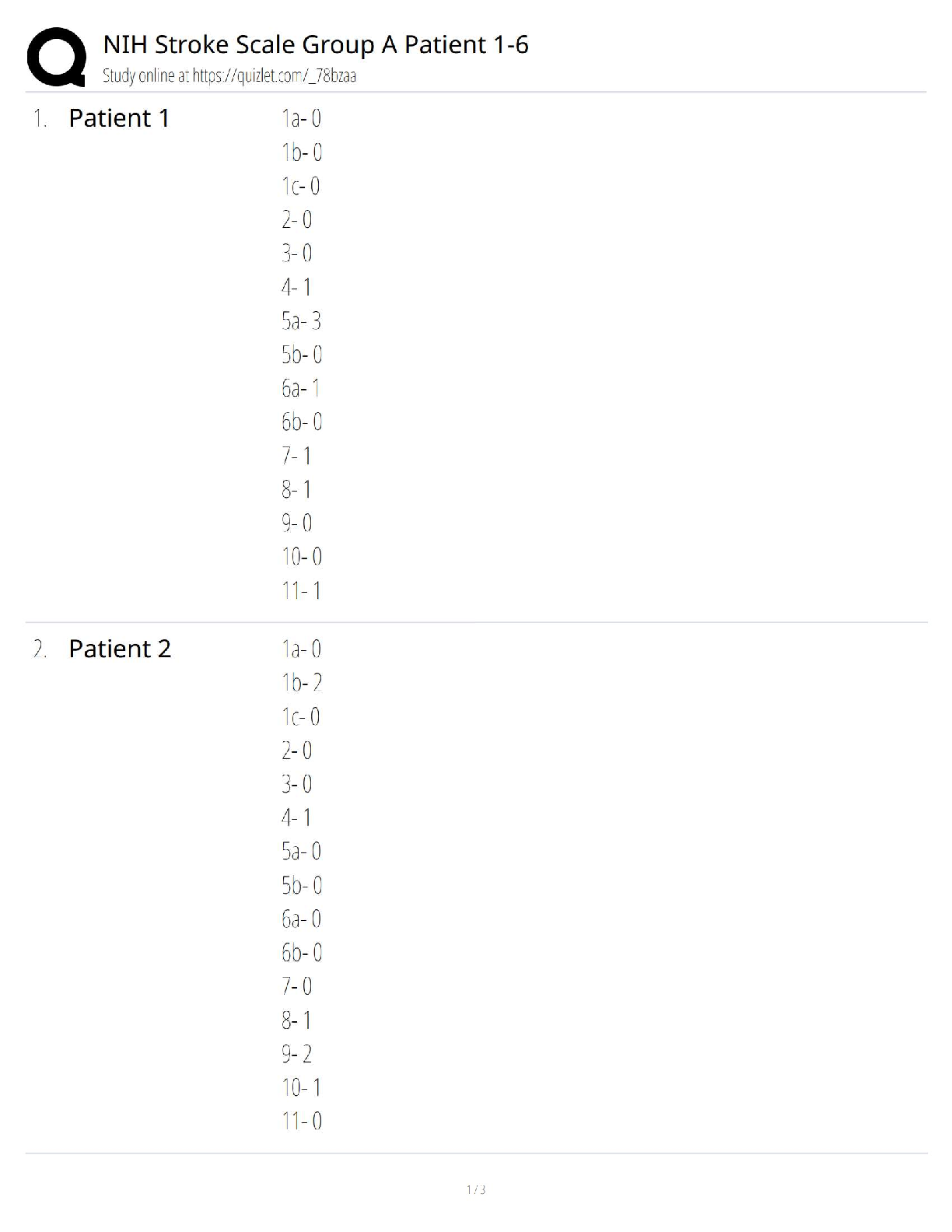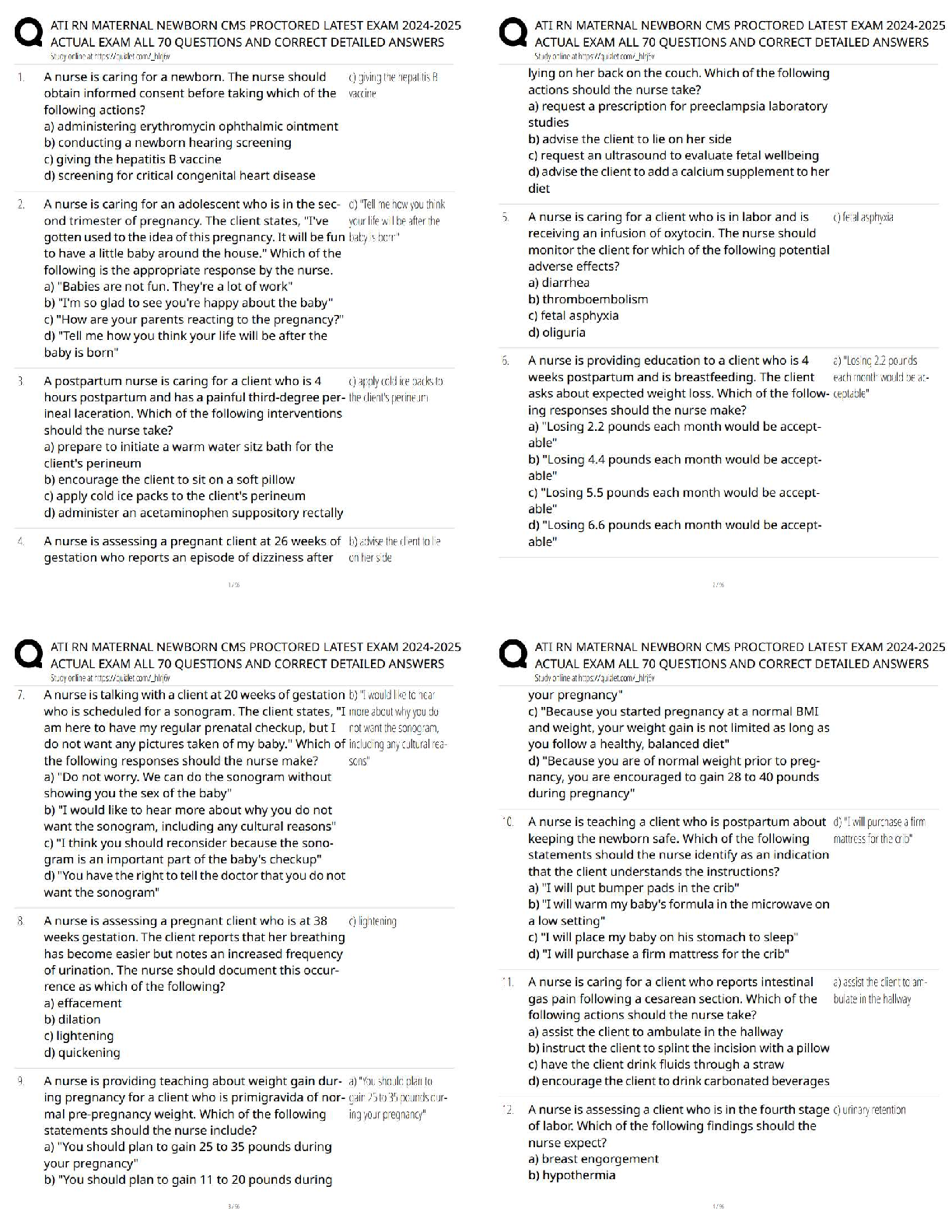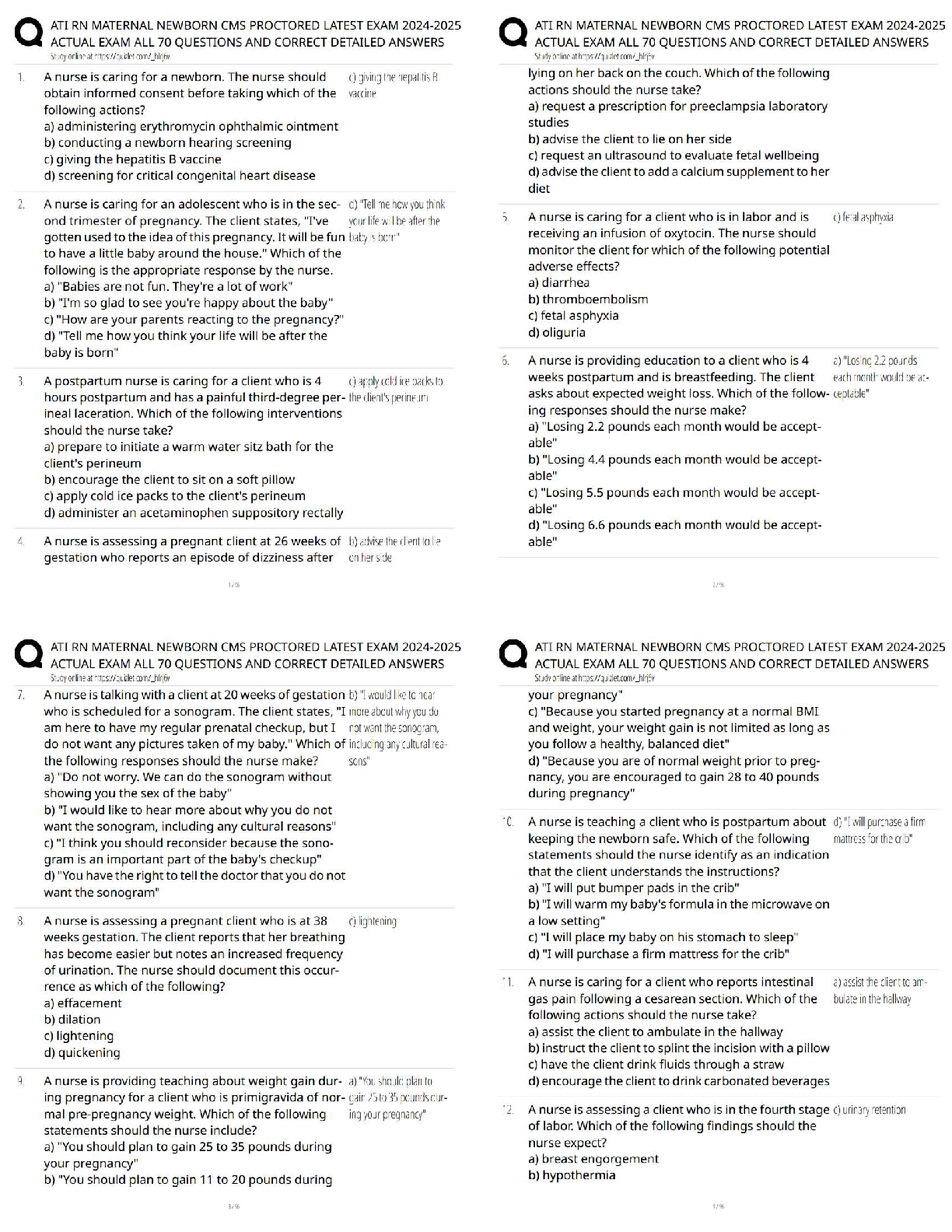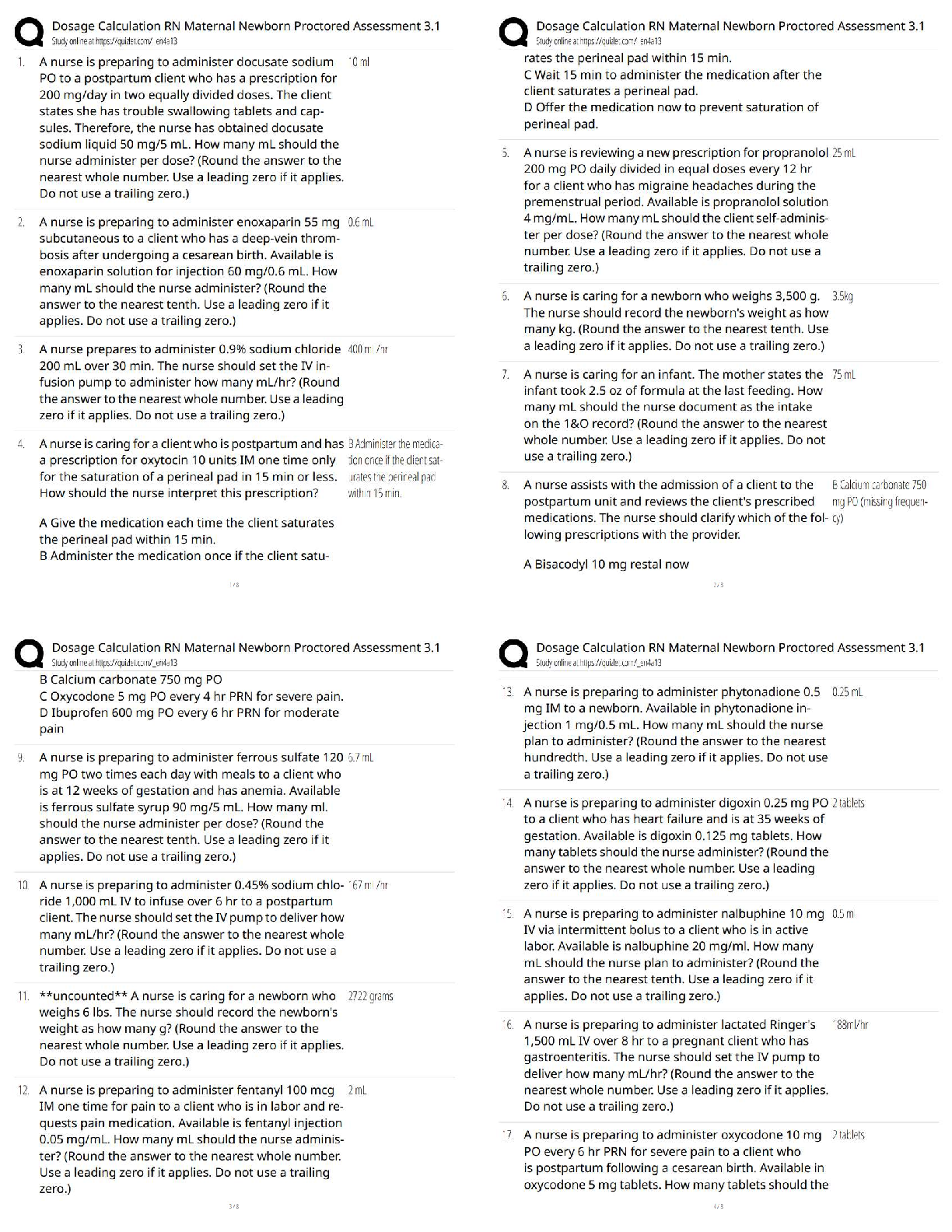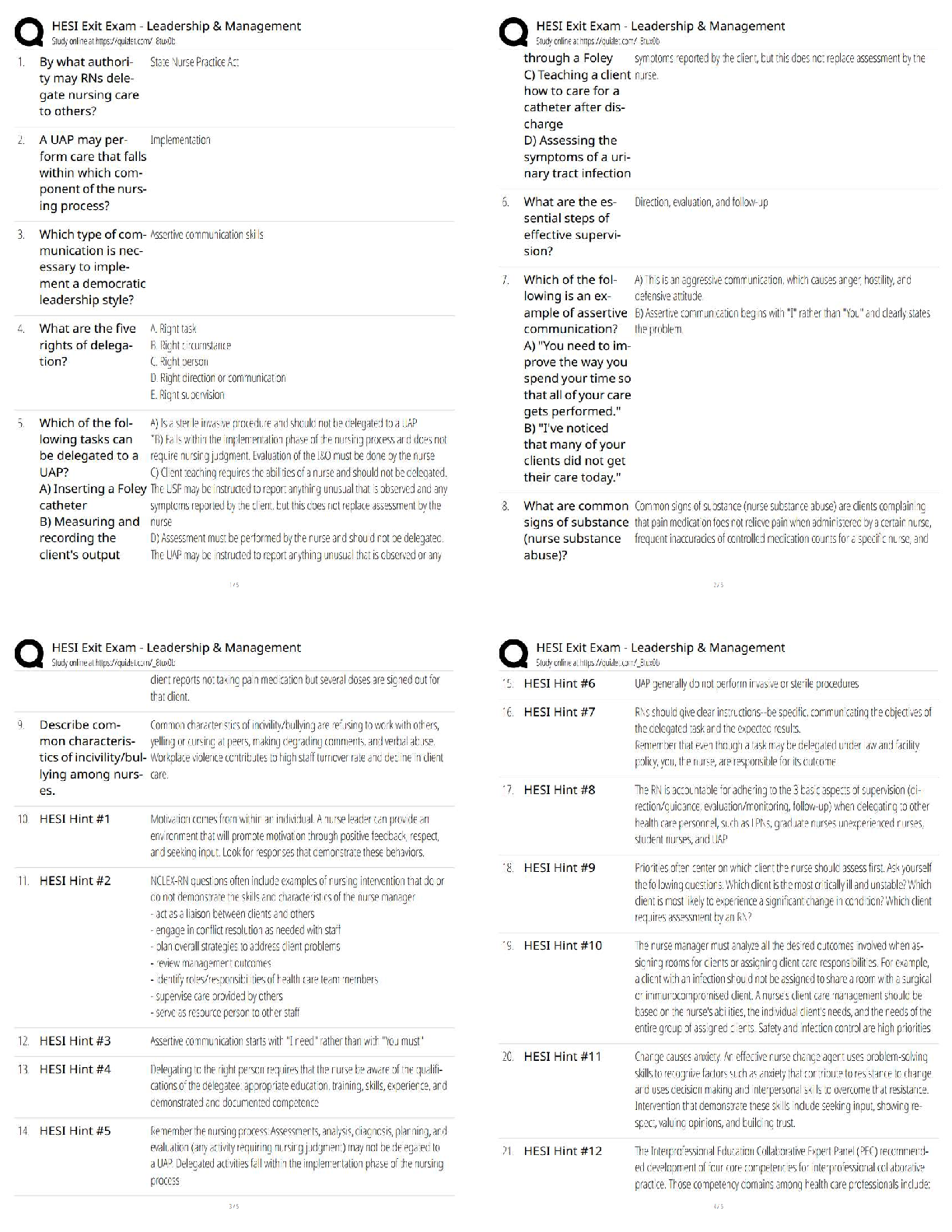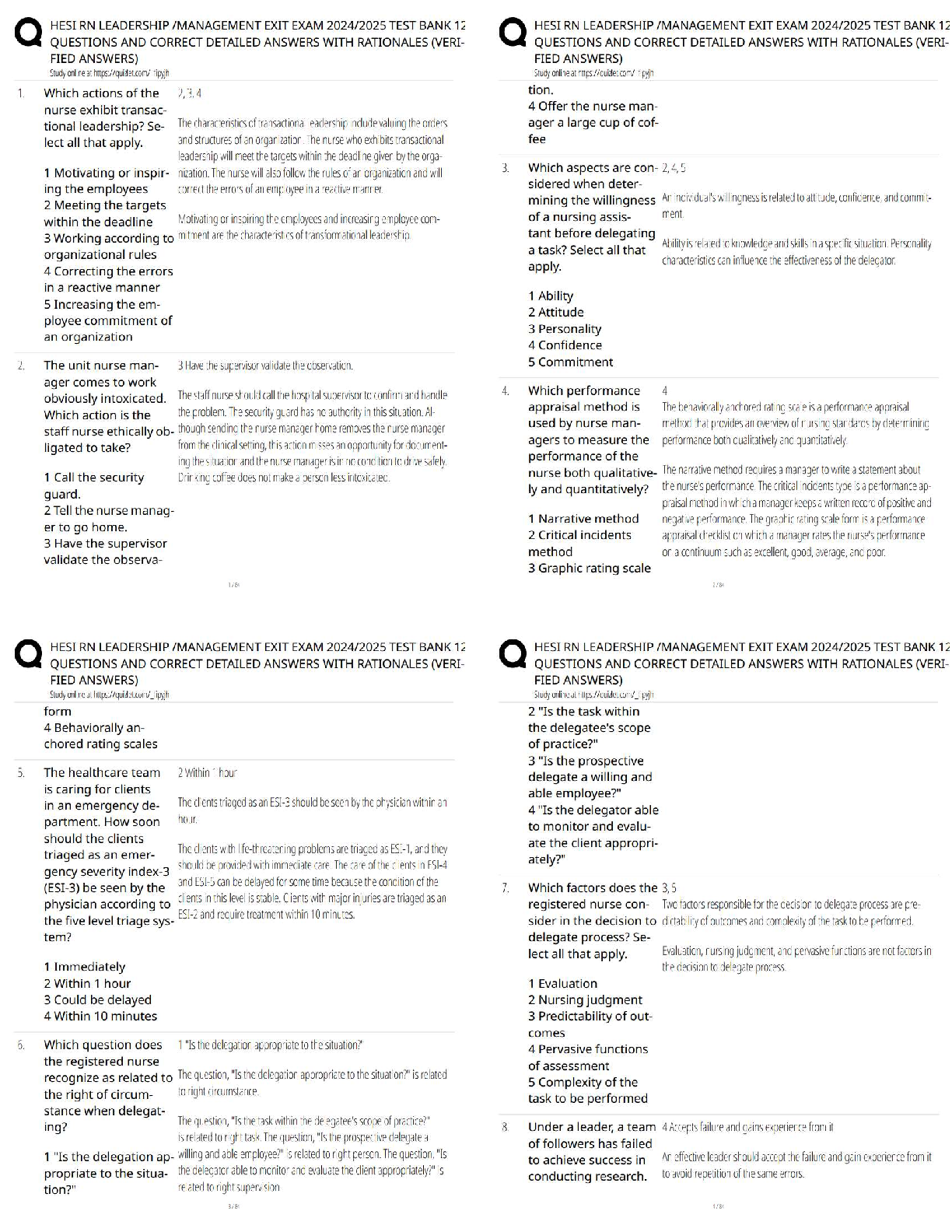Business > QUESTIONS & ANSWERS > [Solved] ECON 101 Week 2 Quiz Ch 3 (All)
[Solved] ECON 101 Week 2 Quiz Ch 3
Document Content and Description Below
ECON 101 Week 2 Quiz Ch 3 Week 2 Quiz (Chapter 3) Return to Assessment List Part 1 of 1 - 100.0 Points Question 1 of 10 10.0 Points A shift of a demand curve to the ri ... ght, all other things unchanged, will: A.increase equilibrium price and quantity. B.decrease equilibrium price and quantity. C.decrease quantity and increase price. D.increase quantity and decrease price. Question 2 of 10 10.0 Points If the current price is above the equilibrium price, we would expect: A.quantity demanded to exceed quantity supplied. B.upward pressure on price. C.quantity supplied to exceed quantity demanded. D.no change in the market price. Question 3 of 10 10.0 Points Demand is defined as: A.an amount that is purchased at a specific price, given supply. B.a schedule that establishes the price of a good. C.a schedule that shows how much will be purchased at various prices during a particular period, all other things unchanged. D.the amount that will be bought at a specific price. Question 4 of 10 10.0 Points The primary difference between a change in demand and a change in the quantity demanded is: A.a change in demand is a movement along the demand curve, and a change in quantity demanded is a shift in the demand curve. B.a change in quantity demanded is a movement along the demand curve, and a change in demand is a shift in the demand curve. C.both a change in quantity demanded and a change in demand are shifts in the demand curve, only in different directions. D.both a change in quantity demanded and a change in demand are movements along the demand curve, only in different directions. Question 5 of 10 10.0 Points A negative relationship between the quantity demanded and price is called the law of ______. A.demand B.diminishing marginal returns C.market clearing D.supply Question 6 of 10 10.0 Points The relationship between the quantity of a good or service sellers are willing and able to offer for sale and the independent variables that determine quantity is: A.supply. B.demand. C.equilibrium. D.disequilibrium. Question 7 of 10 10.0 Points A price below the equilibrium price will: A.result in pressure for price to rise. B.result in a surplus. C.never be the case. D.result in pressure for price to fall. Question 8 of 10 10.0 Points It is true that the equilibrium quantity will always go up if supply: A.and demand both increase. B.increases and demand decreases. C.and demand both decrease. D.decreases and demand remains unchanged. Question 9 of 10 10.0 Points The intersection of the supply and demand curves indicates: A.the equilibrium solution in the market. B.a surplus that will cause the price to fall. C.a shortage that will cause the price to rise. D.the quantity demanded exceeds the quantity supplied. Question 10 of 10 10.0 Points A decrease in supply means: A.a shift to the left of the entire supply curve. B.moving downward (to the left) along the supply curve with lower prices. C.less will be demanded at every price. D.more will be supplied at every price. [Show More]
Last updated: 3 years ago
Preview 1 out of 1 pages
![Preview image of [Solved] ECON 101 Week 2 Quiz Ch 3 document](https://scholarfriends.com/storage/ECON-101-Week-2-Quiz-Ch-3 (1).png)
Buy this document to get the full access instantly
Instant Download Access after purchase
Buy NowInstant download
We Accept:

Reviews( 0 )
$7.00
Can't find what you want? Try our AI powered Search
Document information
Connected school, study & course
About the document
Uploaded On
Feb 02, 2021
Number of pages
1
Written in
All
Additional information
This document has been written for:
Uploaded
Feb 02, 2021
Downloads
0
Views
61


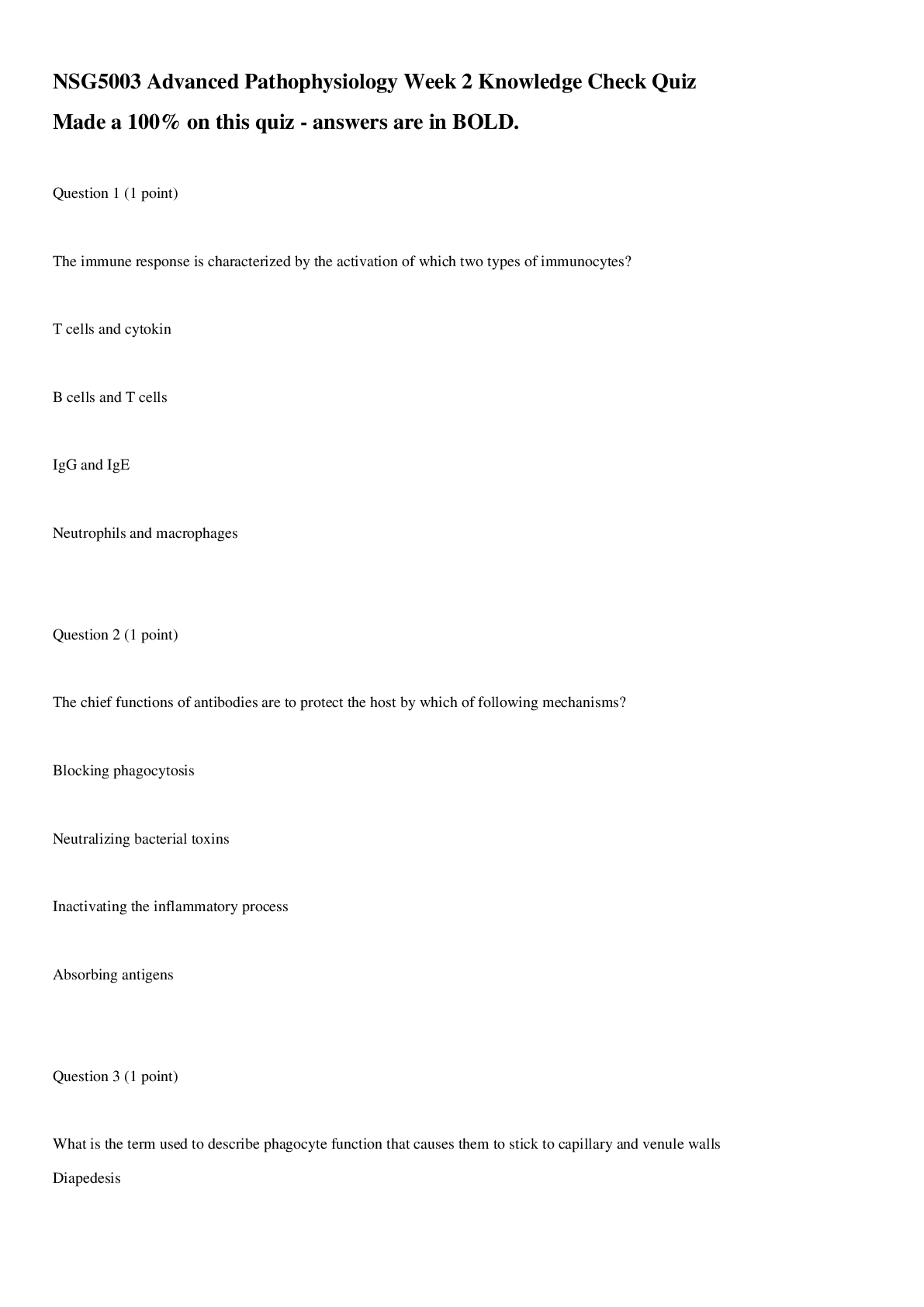
.png)
